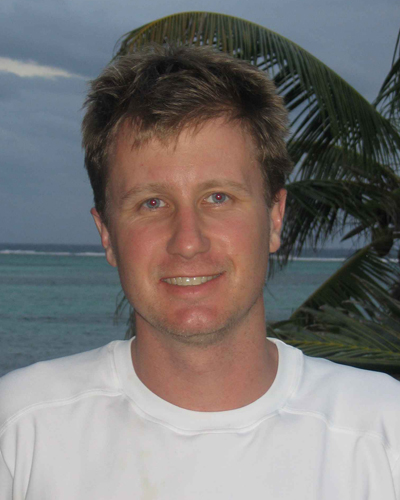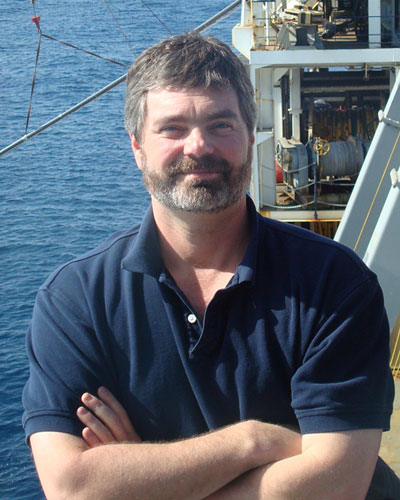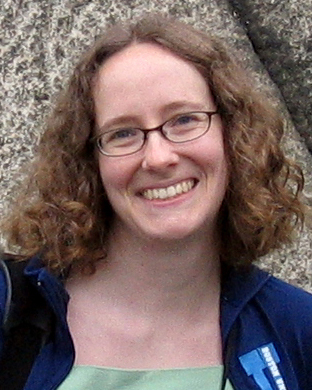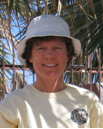The GeoPRISMS office is grateful to the 36 researchers who have served as a GeoPRISMS Distinguished Speaker – for taking time out of their busy schedules to travel on behalf of GeoPRISMS, for sharing their work and their passion, and for inspiring a whole new generation of scientists.
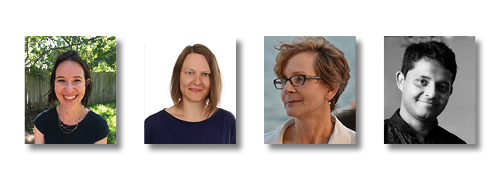
DLP speakers 2018-2019. From left to right: Jaime Barnes, Anne Bécel, Cynthia Ebinger, Abhijit Ghosh
Past Speakers’ bios and lectures
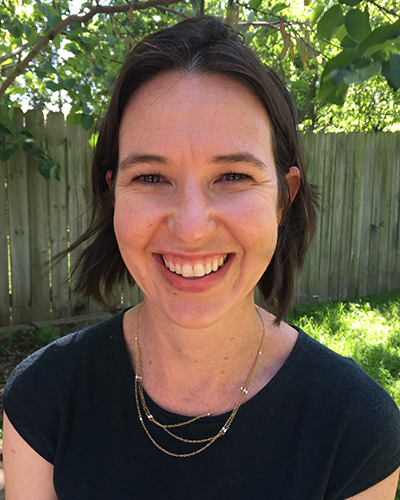 Jaime Barnes
Jaime Barnes
Dr. Jaime Barnes is an Associate Professor at the University of Texas at Austin. She uses stable isotopes as geochemical tracers of fluids in various tectonic and geologic settings from the upper mantle, the oceanic lithosphere, the subducting plate interface, and thermal springs. Much of her research involves volatile cycling, metamorphism and volatile transport in subduction zones, serpentinization, and fluid-rock interactions and metasomatism in high temperature environments with the overarching goal to improve our knowledge of the chemical evolution of the Earth.
Technical Lecture: The role of the forearc in volatile cycling through subduction zones
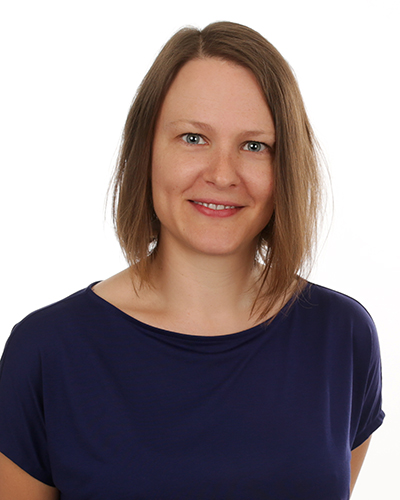 Anne Bécel
Anne Bécel
Dr. Anne Bécel is an Associate Research Professor at Lamont-Doherty Earth Observatory. Her research focuses on characterizing the seismic structure of the Earth’s crust and mantle to better understand underlying tectonic and magmatic processes primarily along active plate boundaries but also at rifted passive margins and ocean basin settings. To investigate these processes, she uses marine active-source seismology and combines her results with other geophysical data such as seismicity, drill hole and potential field data. Since she arrived at Lamont, her research has mainly focused on the study of the Alaska Peninsula and Hellenic subduction zones with an emphasis on assessing specific risks such as large earthquakes and associated tsunamis and the development of the Eastern North American passive margin.
Technical Lecture [Alaska Focus]:Connections between along-strike variations in seismic structure and earthquake behavior at the Alaska Peninsula subduction zone
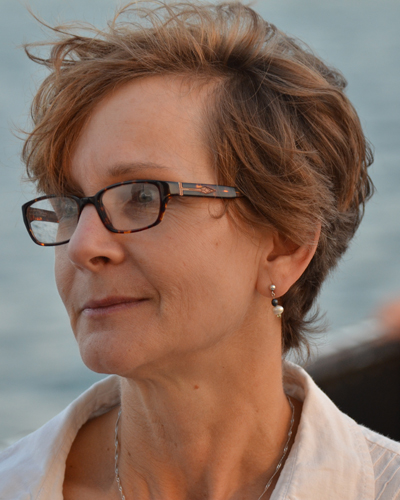
Cynthia Ebinger
Dr. Cynthia Ebinger holds the Marshall-Heape Chair in Geology at Tulane University. She received her BS in marine geology from Duke University, and a MS and PhD from the MIT–Woods Hole Oceanographic Joint Program in Oceanography. She completed her postdoctoral training at NASA Goddard Space Flight Center and through a NATO fellowship at the University of Leeds. Her research focuses on plate boundary deformation processes, with focus on volcano and earthquake processes in marine and continental settings. Specifically, her data acquisition and modeling probe the response of Earth’s plates to stresses induced by the movement of faults and the flow of magma and volatiles. As a geophysicist, she utilizes a range of signal processing and analytical and numerical modeling, studies of rock properties and Earth deformation processes, linking geological and geophysical data sets. The goal of her research teams is to understand the basic physics of fundamental Earth processes.
Technical Lecture: Earthquakes within continental plates: How, where, and why it matters
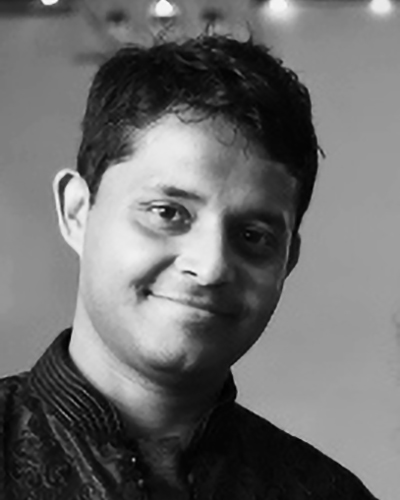 Abhijit Ghosh
Abhijit Ghosh
Dr. Abhijit Ghosh is an Assistant Professor in the Department of Earth Sciences, University of California, Riverside. He earned his PhD in Geophysics from the University of Washington, Seattle. He was a GeoPRISMS Postdoctoral Fellow in the University of California, Santa Cruz. Abhijit is a seismologist interested in understanding wide spectrum of fault behaviors in a holistic way. His research focus includes slow earthquakes, array seismology and earthquake interactions. He designs and carries out seismic experiments in different parts of the world including Alaska, Nepal, New Zealand, Cascadia and California.
Technical Lecture: Broad spectrum of fault slip: fast, slow and everything in between
 Cynthia Ebinger
Cynthia Ebinger
Dr. Cynthia Ebinger holds the Marshall-Heape Chair in Geology at Tulane University. She received her BS in marine geology from Duke University, and a MS and PhD from the MIT–Woods Hole Oceanographic Joint Program in Oceanography. She completed her postdoctoral training at NASA Goddard Space Flight Center and through a NATO fellowship at the University of Leeds. Her research focuses on plate boundary deformation processes, with focus on volcano and earthquake processes in marine and continental settings. Specifically, her data acquisition and modeling probe the response of Earth’s plates to stresses induced by the movement of faults and the flow of magma and volatiles. As a geophysicist, she utilizes a range of signal processing and analytical and numerical modeling, studies of rock properties and Earth deformation processes, linking geological and geophysical data sets. The goal of her research teams is to understand the basic physics of fundamental Earth processes.
Technical Lecture: Earthquakes within continental plates: How, where, and why it matters

Esteban Gazel
Dr. Esteban Gazel is an Associate Professor at the Department of Earth and Atmospheric Sciences at Cornell University. He uses geochemical and petrological tools to understand intraplate magmatism, subduction zone processes, and deep Earth geochemical cycles. Ongoing projects include the evolution of mantle plumes (from Large Igneous Provinces to modern hotspots), the role of island arcs in the generation of continental crust, and volatile budgets in the mantle. His research approach integrates a combination of field, lab, statistical, and theoretical methods with interdisciplinary collaboration with other fields in Earth Science.
Technical Lecture: Making young continents in arcs
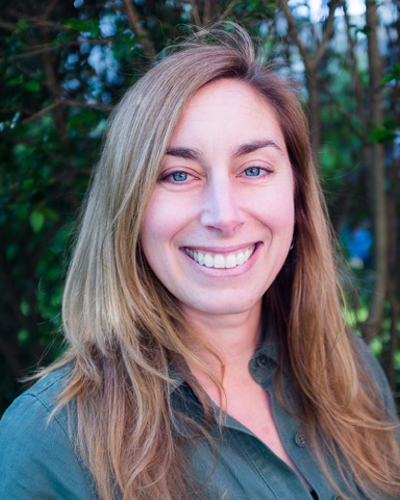
Heather Savage
Dr. Heather Savage is an Associate Research Professor at Lamont-Doherty Earth Observatory. Using both laboratory experiments and field studies, her research focuses on understanding the strength and stability of faults in order to improve our ability to assess when and where large earthquakes occur. Heather is particularly interested in identifying seismic signatures of ancient earthquakes in the rock record that provide windows into the processes that occur during earthquakes. She has worked in a variety of geologic settings, studying faults in California, Nevada, Oklahoma, Vermont, Alaska, Wyoming, Japan, and Italy.
Technical lecture: Understanding deformation in fault zones over multiple seismic cycles
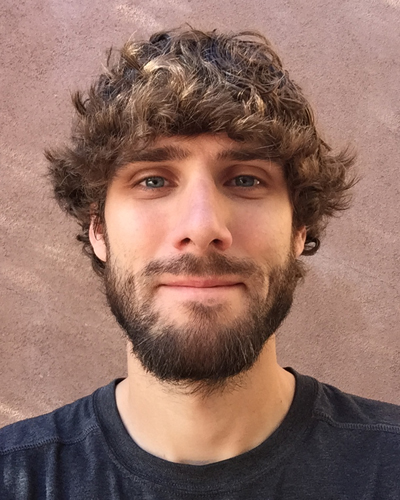
Brandon Schmandt
Dr. Brandon Schmandt is an Assistant Professor in the Earth and Planetary Science Department at the University of New Mexico. His research primarily uses observational seismology to investigate tectonic and magmatic processes. Recently he is involved in a collaborative project to investigate melt generation, melt transport, and crustal evolution in the Cascades arc at Mount St. Helens (www.imush.org). The project includes multi-scale seismic arrays, magnetotelluric imaging, and petrologic analyses. The subset of the seismic studies lead by UNM uses two weeks of continuous recording with a 900-geophone array concentrated within about 12 km of Mount St. Helens. Presentations will largely focus on this hybrid active and passive source portion of the project and place those results in the broader context of recent advanced views of magmatic processes at Mount St. Helens.

Esteban Gazel
Dr. Esteban Gazel is an Assistant Professor at the Department of Geosciences at Virginia Tech. He uses geochemical and petrological tools to understand intraplate magmatism, subduction zone processes, and deep Earth geochemical cycles. Ongoing projects include the evolution of mantle plumes (from Large Igneous Provinces to modern hotspots), the role of island arcs in the generation of continental crust, and volatile budgets in the mantle. His research approach integrates a combination of field, lab, statistical, and theoretical methods with interdisciplinary collaboration with other fields in Earth Science.
Technical Lecture: Making young continents in arcs
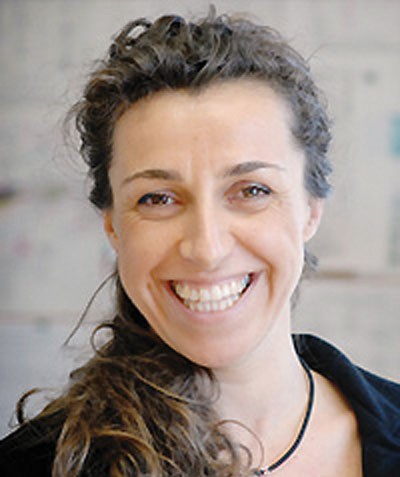
Beatrice Magnani
Dr. Beatrice Magnani is a seismologist at Southern Methodist University whose overarching research theme is the formation, evolution of continents, and continental dynamics. Dr. Magnani employs controlled-source seismology to image continents at a wide range of scales and resolutions, from the lithosphere to the near surface. Her research interests include the Eastern North American passive margin structure and evolution (ENAM Community Seismic Experiment Project), seismic oceanography, and glacial isostatic adjustment (GIA) investigations in the Patagonian Andes.
Technical lecture: Short- and long-lived deformation in the Central US and implications for discriminating between natural and induced seismicity

Heather Savage
Dr. Heather Savage is an Associate Research Professor at Lamont-Doherty Earth Observatory. Using both laboratory experiments and field studies, her research focuses on understanding the strength and stability of faults in order to improve our ability to assess when and where large earthquakes occur. Heather is particularly interested in identifying seismic signatures of ancient earthquakes in the rock record that provide windows into the processes that occur during earthquakes. She has worked in a variety of geologic settings, studying faults in California, Nevada, Oklahoma, Vermont, Alaska, Wyoming, Japan, and Italy.
Technical lecture: Understanding deformation in fault zones over multiple seismic cycles

Brandon Schmandt
Dr. Brandon Schmandt is an Assistant Professor in the Earth and Planetary Science Department at the University of New Mexico. His research primarily uses observational seismology to investigate tectonic and magmatic processes operating near plate boundaries and beneath plate interiors. Recently he is involved in a collaborative project to investigate melt generation, melt transport, and crustal evolution in the Cascades arc at Mount St. Helens. The seismic component of the project uses a multi-scale combination of seismic arrays, including two weeks of continuous recording with a 900-geophone array concentrated within about 12 km of Mount St. Helens.
Technical Lecture: Investigation of Mount St. Helens earthquakes and magma plumbing with a hybrid natural and controlled source seismic survey
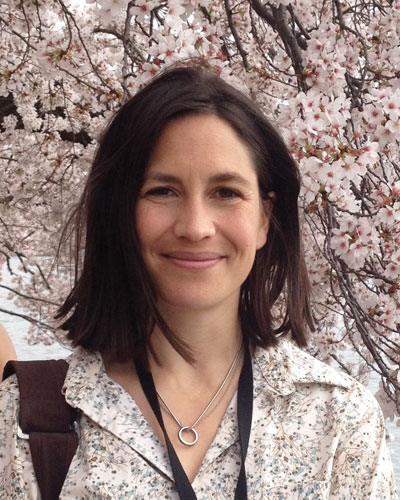
Elizabeth Cottrell
Dr. Elizabeth Cottrell is a curator in the Department of Mineral Sciences at the National Museum of Natural History, Smithsonian Institution where she serves as the Director of the Global Volcanism Program. Liz conducts experiments at high pressures and temperatures to understand the evolution of Earth’s mantle, from the time of planetary accretion and core formation to today. Currently she is focused on understanding how oxygen, hydrogen and carbon cycle between mantle reservoirs, and how this influences the petrogenesis of Earth’s crust and the deep carbon cycle. Liz received her PhD from Columbia University and was a postdoctoral fellow at the Geophysical Laboratory at Carnegie before joining the Smithsonian in 2007.
Technical Lecture: Oxygen Cycling Through Subduction Zones and The Generation of Continents
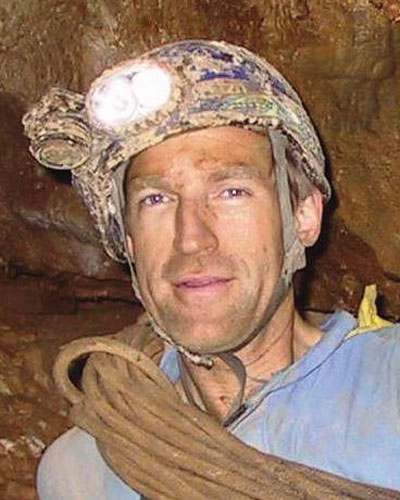
Bradley Hacker
Dr. Bradley Hacker is a Professor in the Department of Earth Science at UC Santa Barbara. His research focuses on field, laboratory, and theoretical study of tectonics using a combination of metamorphic petrology, structural geology, mineral physics, and geochronology. Particular topics of interest include continental subduction, continental collision, and ophiolite emplacement Applied tools are chiefly electron-backscatter diffraction, electron-probe microanalysis, and laser-ablation inductively-coupled-plasma mass spectrometry.
Technical Lecture: Differentiation of the Continental Crust by Relamination

Beatrice Magnani
Dr. Beatrice Magnani is a seismologist at Southern Methodist University whose overarching research theme is the formation, evolution of continents, and continental dynamics. Dr. Magnani employs controlled-source seismology to image continents at a wide range of scales and resolutions, from the lithosphere to the near surface. Her research interests include the Eastern North American passive margin structure and evolution (ENAM Community Seismic Experiment Project), seismic oceanography, and GIA investigations in the Patagonian Andes.
Technical lecture: From plate boundary to intraplate: understanding the role of paleotectonic structures in continental intraplate deformation
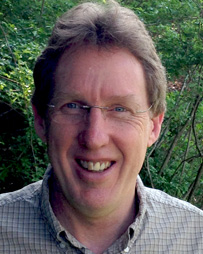 Andy Nyblade
Andy Nyblade
Dr. Andy Nyblade is Professor of Geosciences at Penn State University. He uses seismic recordings of earthquakes to interrogate earth structure in continental settings to understand deep earth processes linked to rifting, plateau uplift, volcanism, basin evolution, mountain building, crustal genesis and craton formation. For the past 10 years, he has led the AfricaArray initiative to build science capacity in Africa and the U.S. through coupled data gathering, research and education programs. He has worked extensively throughout eastern and southern Africa for over 25 years, where much of his research has focused on imaging the African superplume.
Technical lecture: Cenozoic Rifting, Plateau Uplift, and Volcanism in Eastern Africa and the African Superplume
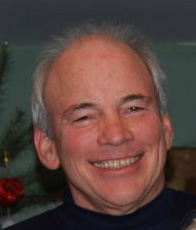
Robert Stern
Dr. Robert J. Stern is Professor of Geosciences at the University of Texas at Dallas. His research focuses on three complementary themes: 1) How modern arc crust forms above subductions zones and evolves into true continental crust; 2) How new subduction zones form; and 3) When and why Plate Tectonics began on Earth. He and his students and collaborators emphasize geochemical and isotopic data sets to investigate examples around the globe, both on land and beneath the sea. Active areas of study include modern examples of arc and backarc basin igneous activity in the Izu-Bonin-Mariana, Japan, Central American and Aleutian arcs, and ancient examples in Afro-Arabia and Iran.
Technical Lecture: Convergent Plate Margins, Subduction Zones, and Island Arcs

Laura Wallace
Dr. Laura Wallace is a Research Scientist at the University of Texas Institute for Geophysics. Laura uses geodetic methods to investigate deformation of the Earth’s crust at plate boundaries, with a particular focus on subduction zones. She undertakes research at various locations in the western Pacific. She is particularly interested in understanding the physical mechanisms that control subduction thrust earthquakes and slow slip events. She is currently leading a large-scale international project to deploy ocean bottom seismometers and seafloor geodetic instruments to investigate slow slip events offshore New Zealand. Prior to her arrival at the University of Texas, Laura was a research scientist at GNS Science in New Zealand for nearly a decade.
Technical Lecture: Sticky or Slippery? Controls on subduction megathrust behavior at the Hikurangi subduction margin, New Zealand

Richard Allen
Dr. Richard Allen is the Director of the Berkeley Seismological Laboratory and a Professor in the Deptartment of Earth and Planetary Science at UC Berkeley since 2005. His research group focuses on two topics. The Earth imaging group uses 3D imaging of the Earth’s internal structure to understand the upwelling and downwelling of plumes and plates, and the surface deformation responsible for earthquakes. The real-time earthquake information group focuses on rapid determination of earthquake source parameters and is currently testing an earthquake warning system along the US west coast.
Technical Lecture: The Cascadia Enigma: Probing the structure of a silent subduction zone
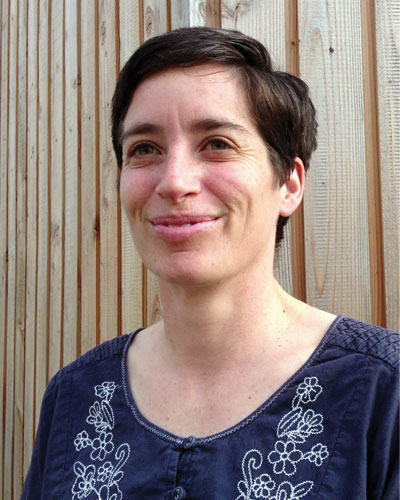
Rebecca Bendick
Dr. Rebecca Bendick is an Associate Professor at the University of Montana. She studies the deformation of the Earth’s lithosphere. She is especially interested in understanding the mechanisms that produce the continental landscape, including how that landscape is related to the simple forces associated with tectonics and topography. This research uses many different tools, including numerical simulation, GPS geodesy, seismology, and tectonic geomorphology. Working worldwide, she currently has active research projects in the western U.S., Central Asia, Ethiopia, and subduction syntaxes globally. She is also interested in the relationship between scientific research and human societies, especially in the context of geologic hazards.
Technical Lecture: Constraints on Lithospheric Mechanics or Tectonic Dynamics from Surface Deformation

Elizabeth Cottrell
Dr. Elizabeth Cottrell is a curator in the Department of Mineral Sciences at the National Museum of Natural History, Smithsonian Institution where she serves as the Director of the Global Volcanism Program. Liz conducts experiments at high pressures and temperatures to understand the evolution of Earth’s mantle, from the time of planetary accretion and core formation to today. Currently she is focused on understanding how oxygen, hydrogen and carbon cycle between mantle reservoirs, and how this influences the petrogenesis of Earth’s crust and the deep carbon cycle. Liz received her PhD from Columbia University and was a postdoctoral fellow at the Geophysical Laboratory at Carnegie before joining the Smithsonian in 2007.
Technical Lecture: Oxygen Cycling Through Subduction Zones and The Generation of Continents

Bradley Hacker
Dr. Bradley Hacker is a Professor in the Department of Earth Science at UC Santa Barbara. His research focuses on field, laboratory, and theoretical study of tectonics using a combination of metamorphic petrology, structural geology, mineral physics, and geochronology. Particular topics of interest include continental subduction, continental collision, and ophiolite emplacement Applied tools are chiefly electron-backscatter diffraction, electron-probe microanalysis, and laser-ablation inductively-coupled-plasma mass spectrometry.
Technical Lecture: Differentiation of the Continental Crust by Relamination
 Andy Nyblade
Andy Nyblade
Dr. Andy Nyblade is Professor of Geosciences at Penn State University. He uses seismic recordings of earthquakes to interrogate earth structure in continental settings to understand deep earth processes linked to rifting, plateau uplift, volcanism, basin evolution, mountain building, crustal genesis and craton formation. For the past 10 years, he has led the AfricaArray initiative to build science capacity in Africa and the U.S. through coupled data gathering, research and education programs. He has worked extensively throughout eastern and southern Africa for over 25 years, where much of his research has focused on imaging the African superplume.
Technical lecture: Cenozoic Rifting, Plateau Uplift, and Volcanism in Eastern Africa and the African Superplume

Josh Roering
Dr. Josh Roering is a Professor at the University of Oregon focusing on landscape evolution, mountain-scale erosion, and sedimentation. He uses airborne LiDAR data, geochemical tracers, and remote sensing imagery to study the processes by which bedrock is eroded, transported, and deposited along continental margins. Working in Oregon and South Africa, his research tackles how biota and climate contribute to hillslope evolution and erosion. Projects in New Zealand and northern California focus on the role of landslides in regulating the height of mountain ranges as well as the timing and pattern of sediment delivered to marine settings.
Technical Lecture: Limits to Life’s Role in Landscape Evolution: Physical, Chemical, and Biological Drivers of Erosion along Continental Margins

Robert Stern
Dr. Robert J. Stern is Professor of Geosciences at the University of Texas at Dallas. His research focuses on three complementary themes: 1) How modern arc crust forms above subductions zones and evolves into true continental crust; 2) How new subduction zones form; and 3) When and why Plate Tectonics began on Earth. He and his students and collaborators emphasize geochemical and isotopic data sets to investigate examples around the globe, both on land and beneath the sea. Active areas of study include modern examples of arc and backarc basin igneous activity in the Izu-Bonin-Mariana, Japan, Central American and Aleutian arcs, and ancient examples in Afro-Arabia and Iran.
Technical Lecture: Convergent Plate Margins, Subduction Zones, and Island Arcs
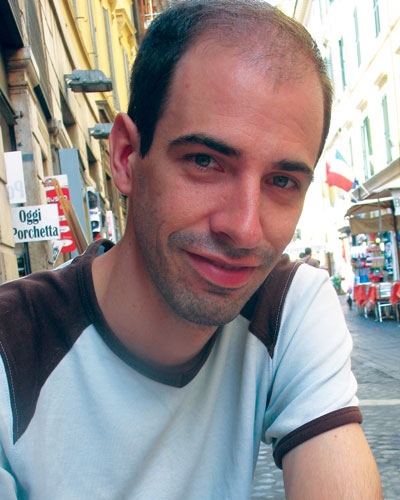
Kyle Straub
Dr. Kyle Straub is an Assistant Professor at Tulane University. He studies Earth surface dynamics and their influence on the stratigraphic architecture of continental margin deposits. Kyle and his students use a combination of remote sensing of subsurface sedimentary deposits, carefully designed laboratory experiments, field studies of modern and ancient transport systems, and targeted numerical analysis and modeling. Kyle’s current work centers on the storage of time in stratigraphy and the generation of non-random patterns in stratigraphy resulting from internal processes of sediment routing systems.
Technical Lecture: Process Controls on Stratigraphic Completeness and Basin Filling Sedimentation Patterns along Passive Margins
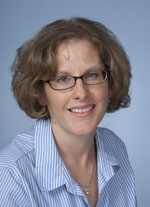 Heather DeShon
Heather DeShon
Dr. Heather DeShon is a Seismologist at Southern Methodist University whose research focuses on understanding earthquake initiation and rupture complexity within subduction systems. She uses high-resolution earthquake relocation and tomography to explore the spatial and temporal relationships between seismic source characteristics and structural variability along subduction megathrust faults. More broadly, her research is aimed at improving the characterization of subduction zone seismic and tsunami hazard. Her current work focuses on the Costa Rica-Nicaragua and Sumatra subduction margins.
Technical Lecture: Using seismic tomography to image subduction systems: Applications to Costa Rica-Nicaragua and Sumatra

Rebecca Bendick
Dr. Rebecca Bendick is an Associate Professor at the University of Montana. She studies the deformation of the Earth’s lithosphere. She is especially interested in understanding the mechanisms that produce the continental landscape, including how that landscape is related to the simple forces associated with tectonics and topography. This research uses many different tools, including numerical simulation, GPS geodesy, seismology, and tectonic geomorphology. Working worldwide, she currently has active research projects in the western U.S., Central Asia, Ethiopia, and subduction syntaxes globally. She is also interested in the relationship between scientific research and human societies, especially in the context of geologic hazards.
Technical Lecture: Constraints on lithospheric mechanics or tectonic dynamics from surface deformation
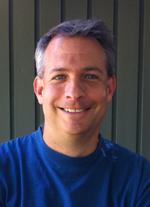 Jeff McGuire
Jeff McGuire
Dr. Jeff McGuire is an Associate Scientist in the department of Geology and Geophysics at the Woods Hole Oceanographic Institution in Woods Hole MA. He studies faulting and earthquake processes at oceanic transform faults and subduction zones with the goal of better understanding fault-zone structure, the processes that occur during rupture, and the interactions between seismic and aseismic fault slip. He utilizes a combination of geodetic and seismic data from both onshore networks and seafloor instruments. His recent work has focused on East Pacific Rise transform faults and the Cascadia subduction zone.
Technical Lecture: 20,000 foreshocks under the sea: Studying complete seismic cycles on East Pacific Rise transform faults
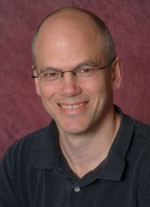 Craig Manning
Craig Manning
Dr. Craig Manning is Professor of Geology and Geochemistry in the Department of Earth and Space Sciences at the University of California, Los Angeles. His research focuses on experimental and theoretical study of geofluids at high pressure and temperature, with emphasis on subduction zones, mantle metasomatism, and metamorphic systems. Planetary applications include the high-pressure oceans of our solar system and extrasolar planets. Manning also studies Hydrogen in nominally anhydrous minerals, Hadean and Archean geology, and the geology and tectonics of central Asia.
Technical Lecture: Going deep: New insights into subduction zone fluids
 Tyrone Rooney
Tyrone Rooney
Dr. Tyrone Rooney is an Associate Professor at Michigan State University focusing on geochemistry. He studies magmatic processes active in continental rift and subduction environments. Tyrone earned his Ph.D. from the Pennsylvania State University in 2006 and undertook post-doctoral studies at San Diego State University. Tyrone and his students are seeking to develop a more comprehensive understanding of continental lithosphere evolution through the coupled use of geochemistry, and petrology. In continental rift environments, Tyrone’s research group is focused on examining the composition of the mantle and magmatic plumbing systems during progressive rifting. Tyrone’s current research in extensional settings is focused on the Main Ethiopian Rift.
Technical lecture: From initiation to termination – the critical role of magma in rift evolution

Josh Roering
Dr. Josh Roering is a Professor at the University of Oregon focusing on landscape evolution, mountain-scale erosion, and sedimentation. He uses airborne LiDAR data, geochemical tracers, and remote sensing imagery to study the processes by which bedrock is eroded, transported, and deposited along continental margins. Working in Oregon and South Africa, his research tackles how biota and climate contribute to hillslope evolution and erosion. Projects in New Zealand and northern California focus on the role of landslides in regulating the height of mountain ranges as well as the timing and pattern of sediment delivered to marine settings.
Technical Lecture: Limits to life’s role in landscape evolution: Physical, chemical, and biological drivers of erosion along continental margins
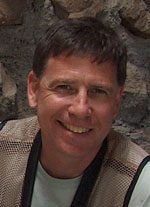 Chris Scholz
Chris Scholz
Dr. Chris Scholz is Professor of Earth Sciences at Syracuse University. He uses marine geological techniques such as reflection seismology and offshore scientific drilling to study the evolution of extensional basins and the sedimentary architecture of rift basin fills. His current projects are focused on large lakes in the East African Rift Valley, where new sedimentary records document the dynamic interaction of tropical climate variability and active divergent tectonics, and provide the environmental background to human origins.
Technical Lecture: Comparative sedimentary architecture of magmatic versus amagmatic continental rifts: Case studies from East Africa

Kyle Straub
Dr. Kyle Straub is an Assistant Professor at Tulane University. He studies Earth surface dynamics and their influence on the stratigraphic architecture of continental margin deposits. Kyle and his students use a combination of remote sensing of subsurface sedimentary deposits, carefully designed laboratory experiments, field studies of modern and ancient transport systems, and targeted numerical analysis and modeling. Kyle’s current work centers on the storage of time in stratigraphy and the generation of non-random patterns in stratigraphy resulting from internal processes of sediment routing systems.
Technical Lecture: Process controls on stratigraphic completeness and basin filling sedimentation patterns along passive margins
 Heather Deshon
Heather Deshon
Dr. Heather DeShon is a Seismologist at Southern Methodist University whose research focuses on understanding earthquake initiation and rupture complexity within subduction systems. She uses high-resolution earthquake relocation and tomography to explore the spatial and temporal relationships between seismic source characteristics and structural variability along subduction megathrust faults. More broadly, her research is aimed at improving the characterization of subduction zone seismic and tsunami hazard. Her current work focuses on the Costa Rica-Nicaragua and Sumatra subduction margins.
Public Lecture: Great earthquakes and new insights into subduction seismogenesis
Technical Lecture: Using seismic tomography to image subduction systems: Applications to Costa Rica-Nicaragua and Sumatra
 Magali Billen
Magali Billen
Dr. Magali Billen is a Geophysicist at the University of California, Davis. Magali’s research is focused on understanding how tectonic plates deform as they sink into the Earth’s interior in subduction zones. She compares the results of numerical simulations of with various observations, such as slab dip, surface plate motions and topography, to learn about how rock properties affect the dynamics of plate subduction, and ultimately how sinking plates drive plate tectonics. Magali’s current research includes the origin of fast mantle flow rates around slabs, the processes causing slab break-off, subduction of oceanic plateaus, and the causes and consequences of outer-rise faulting.
Public Lecture: Going down fighting: Deformation and destruction of sinking tectonic plates
Technical Lecture: From the outer rise to the transition zone: Observations and models of plate and mantle deformation during subduction
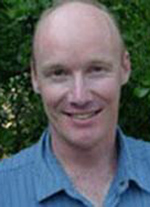 Harm van Avendonk
Harm van Avendonk
Dr. Harm Van Avendonk is a seismologist at the University of Texas at Austin who uses active-source seismic data to investigate the evolution of plate boundaries. At divergent plate boundaries he studies the role of faults in the thinning of continental margins, and the exhumation of continental mantle. He is also interested in the development of sedimentary basins on subsiding margins. At subduction zones he studies the effect of water on the physical properties of the plate interface. He has also made estimates of the amount of water stored in the subduction oceanic lithosphere offshore Nicaragua and Costa Rica.
Public Lecture: The life cycle of rifted margins
Technical Lecture: A seismic refraction study of the Cocos Plate offshore Nicaragua and Costa Rica
 Craig Manning
Craig Manning
Dr. Craig Manning is Professor of Geology and Geochemistry in the Department of Earth and Space Sciences at the University of California, Los Angeles. His research focuses on experimental and theoretical study of geofluids at high pressure and temperature, with emphasis on subduction zones, mantle metasomatism, and metamorphic systems. Planetary applications include the high-pressure oceans of our solar system and extrasolar planets. Manning also studies Hydrogen in nominally anhydrous minerals, Hadean and Archean geology, and the geology and tectonics of central Asia.
Public Lecture: Going deep: New insights into subduction zone fluids
Technical Lecture: In deep water: New insights into geologic fluids of the deep crust and upper mantle
 Tyrone Rooney
Tyrone Rooney
Dr. Tyrone Rooney is an Associate Professor at Michigan State University focusing on geochemistry. He studies magmatic processes active in continental rift and subduction environments. Tyrone earned his Ph.D. from the Pennsylvania State University in 2006 and undertook post-doctoral studies at San Diego State University. Tyrone and his students are seeking to develop a more comprehensive understanding of continental lithosphere evolution through the coupled use of geochemistry, and petrology. In continental rift environments, Tyrone’s research group is focused on examining the composition of the mantle and magmatic plumbing systems during progressive rifting. Tyrone’s current research in extensional settings is focused on the Main Ethiopian Rift.
Public lecture: Continental rifting and its role in shaping of the world we live in today
Technical lecture: From initiation to termination – the critical role of magma in rift evolution
 Geoff Abers
Geoff Abers
Dr. Geoffrey Abers uses the tools of earthquake seismology to illuminate at depth the processes by which material cycles through active plate boundaries, and the manner in which they deform. He has deployed broadband seismic arrays in a variety of rifts and subduction zones around the Pacific rim. These imaging arrays are used to follow the evolution subducting crust to sub-arc depths, to understand dynamic processes within the mantle beneath volcanoes, and to better understand fault dynamics. Geoff is a Lamont Research Professor at Columbia University’s Lamont-Doherty Earth Observatory.
Public Lecture: How water deep in the Earth controls earthquakes and volcanoes
Technical Lecture: Imaging with geophysics: The heat and water cycling in modern subduction zones
 Chris Scholz
Chris Scholz
Dr. Chris Scholz is Professor of Earth Sciences at Syracuse University. He uses marine geological techniques such as reflection seismology and offshore scientific drilling to study the evolution of extensional basins and the sedimentary architecture of rift basin fills. His current projects are focused on large lakes in the East African Rift Valley, where new sedimentary records document the dynamic interaction of tropical climate variability and active divergent tectonics, and provide the environmental background to human origins.
Public Lecture: Climate change and human origins: New discoveries through scientific drilling in East Africa’s Great Rift Valley
Technical Lecture: Comparative sedimentary architecture of magmatic versus amagmatic continental rifts: Case studies from East Africa
 Katie Keranen
Katie Keranen
Dr. Katie Keranen is Assistant Professor of Geophysics in the School of Geology and Geophysics at the University of Oklahoma. She studies the tectonics of the crust in active continental rifts and convergent plate margins. Katie earned her PhD from Stanford in 2008 and was a USGS Mendenhall Post-doctoral Fellow. Katie and her students combine active- and passive-source seismic data with potential field data in rift settings to study how rifts form and evolve, and the role of magmatism, thermal state, and structural boundaries in controlling these processes. Katie’s current work in extensional settings is focused on the Main Ethiopian Rift and the Eastern California Shear Zone-Walker Lane.
Public Lecture: Controls on continental breakup: Understanding active processes along the East African Rift
Technical Lecture: Extension beyond the rift boundaries: Magmatism, heat, and depth-dependent deformation in Ethiopia
Paul Umhoefer
Dr. Paul Umhoefer is Professor of Geology in the School of Earth Sciences & Environmental Sustainability at Northern Arizona University. He studies the tectonics of the upper crust at young and active divergent and oblique-divergent plate boundaries and continental rifts. Paul and his students and colleagues combine field and lab data to study how faults and basins develop in these settings, and the role of tectonics and climate in controlling these processes. Paul’s current work is centered on the southern Baja California peninsula, the Lake Mead area of the central Basin and Range, and south-central Turkey.
Technical Lecture: How Plate Tectonics Works in the Southern Gulf of California: A Rapid Birth in a Hot Setting
 Peter van Keken
Peter van Keken
Dr. Peter van Keken is a geophysicist at the University of Michigan who uses computational methods to study the causes and consequences of plate tectonics. He focuses on the long term chemical and thermal evolution of the Earth, the dynamics of mantle plumes and the structure and evolution of subduction zones. Within GeoPRISMs he works in interdisciplinary projects focusing on the cycling of volatiles in subduction zones and their role in generating earthquakes and arc volcanism.
Technical Lecture: Dynamics of Subduction Zones and the Recycling of Water to the Deep Earth
 Harm van Avendonk
Harm van Avendonk
Dr. Harm Van Avendonk is a seismologist at the University of Texas at Austin who uses active-source seismic data to investigate the evolution of plate boundaries. At divergent plate boundaries he studies the role of faults in the thinning of continental margins, and the exhumation of continental mantle. He is also interested in the development of sedimentary basins on subsiding margins. At subduction zones he studies the effect of water on the physical properties of the plate interface. He has also made estimates of the amount of water stored in the subduction oceanic lithosphere offshore Nicaragua and Costa Rica.
Technical Lecture: Extension of Continental Crust at the Eastern Grand Banks, Newfoundland
John Swenson
John Swenson studies the morphodynamics of fluvial and shallow-marine systems, with an emphasis on the coupling between these depositional environments. His work focuses on clinoform dynamics, shoreline response to sea-level change, and avulsion and lobe switching in distributary-channel networks. He develops mathematical models that predict how these linked depositional systems evolve and what that evolution leaves behind in the sedimentary record. John is an Associate Professor of Geology in the Department of Geological Sciences at the University of Minnesota Duluth, Duluth, MN.
Technical Lecture: Predictive Models for Avulsion Frequency and Lobe Dimensions on Wave-Influenced Deltas
Alison Shaw
Dr. Alison Shaw is a geochemist at Woods Hole Oceanographic Institution, whose research focuses on understanding the role of volatiles such as H2O, CO2 and S in magmatic systems. She studies the chemical composition of rocks, gases, fluids and melt inclusions to quantify volatile fluxes and to identify how volatiles are modified during transfer to and from the mantle. She is currently working on projects at various subduction zones along the Pacific’s “ring of fire”, including the Mariana arc, the Izu-Bonin arc, the Central American arc and the Kamchatkan arc.
Technical lecture: The Chemical Consequences of Slab Dehydration Across Subduction Zones
 Geoff Abers
Geoff Abers
Dr. Geoffrey Abers uses the tools of earthquake seismology to illuminate at depth the processes by which material cycles through active plate boundaries, and the manner in which they deform. He has deployed broadband seismic arrays in a variety of rifts and subduction zones around the Pacific rim. These imaging arrays are used to follow the evolution subducting crust to sub-arc depths, to understand dynamic processes within the mantle beneath volcanoes, and to better understand fault dynamics. Geoff is a Lamont Research Professor at Columbia University’s Lamont-Doherty Earth Observatory.
Technical Lecture: Imaging with Geophysics: The Heat and Water Cycling in Modern Subduction Zones
Steve Holbrook
Steve Holbrook is a marine seismologist who has sailed on 15 research cruises studying subjects varying from continental margin structure to seismic oceanography. He is a native of eastern Pennsylvania and did his undergraduate degree in geoscience at Penn State. He worked for Chevron in San Francisco before doing his MS and PhD degrees in geophysics at Stanford. Following his PhD, Steve joined the scientific staff of Woods Hole Oceanographic Institution, where he worked for nearly nine years before joining the faculty at the University of Wyoming.
Technical Lecture: The Subduction Sponge: Mantle Serpentinization in the Downgoing Plate
 Katie Keranen
Katie Keranen
Dr. Katie Keranen is Assistant Professor of Geophysics in the School of Geology and Geophysics at the University of Oklahoma. She studies the tectonics of the crust in active continental rifts and convergent plate margins. Katie earned her PhD from Stanford in 2008 and was a USGS Mendenhall Post-doctoral Fellow. Katie and her students combine active- and passive-source seismic data with potential field data in rift settings to study how rifts form and evolve, and the role of magmatism, thermal state, and structural boundaries in controlling these processes. Katie’s current work in extensional settings is focused on the Main Ethiopian Rift and the Eastern California Shear Zone-Walker Lane.
Public Lecture: Controls on Continental Breakup: Understanding Active Processes Along the East African Rift
Technical Lecture: Extension Beyond the Rift Boundaries: Magmatism, Heat, and Depth-Dependent Deformation in Ethiopia
Paul Umhoefer
Dr. Paul Umhoefer is Professor of Geology in the School of Earth Sciences & Environmental Sustainability at Northern Arizona University. He studies the tectonics of the upper crust at young and active divergent and oblique-divergent plate boundaries and continental rifts. Paul and his students and colleagues combine field and lab data to study how faults and basins develop in these settings, and the role of tectonics and climate in controlling these processes. Paul’s current work is centered on the southern Baja California peninsula, the Lake Mead area of the central Basin and Range, and south-central Turkey.
Technical Lecture: How Plate Tectonics Works in the Southern Gulf of California: A Rapid Birth in a Hot Setting
 Peter van Keken
Peter van Keken
Dr. Peter van Keken is a geophysicist at the University of Michigan who uses computational methods to study the causes and consequences of plate tectonics. He focuses on the long term chemical and thermal evolution of the Earth, the dynamics of mantle plumes and the structure and evolution of subduction zones. Within GeoPRISMs he works in interdisciplinary projects focusing on the cycling of volatiles in subduction zones and their role in generating earthquakes and arc volcanism.
Technical Lecture: Dynamics of Subduction Zones and the Recycling of Water to the Deep Earth
Emily Brodsky
Dr. Emily Brodsky is an earthquake physicist at the University of California, Santa Cruz who studies the processes that start earthquakes and the forces on faults that inhibit slipusing a variety of tools from seismology, experimental rheology, hydrogeology and structural geology. She also studies explosive volcanism, landslides and glacial slip. Prof. Brodsky earned her B.A. from Harvard in 1995, PhD from the Caltech in 2001 and was a 2001 Miller Fellow at the University of California Berkeley. She is the recipient of the inaugaural 2005 Charles Richter Early Career award from the Seismological Society of America and the 2008 James Macelwane Medal from the American Geophysical Union.
Technical Lecture: The interaction between fault zone structure and rheology
Chris Goldfinger
Dr. Chris Goldfinger is a marine geologist and geophysicist with a focus on great earthquakes and structure of subduction zones around the world. He has experience with deep submersibles, sidescan sonar, seismic reflection, and other marine geophysical tools on over 30 oceanographic cruises over the last 20 years. He is currently working on great subduction earthquakes along the Cascadia and Sumatran margins, as well as the Northern San Andreas Fault off northern California using the evidence for earthquakes found in deep-sea sediments.
Chris is an Associate Professor of Marine Geology and received his PhD from Oregon State University in 1994.
Technical Lecture: Earthquake Recurrence, Segmentation, and Stress Triggering on the Cascadia Margin
Rudy Slingerland
Rudy Slingerland’s research group studies the evolution of morphodynamic systems such as deltas, rivers, and shallow marine shelves by coupling theory, often in the form of dynamical models, with observations in the field and subsurface. Our ultimate goal is develop predictive theories for the behavior of these systems and the stratal record of their deposits.
Rudy Slingerland is a Professor of Geology in the Department of Geosciences at the Pennsylvania State University, University Park, PA.
Technical lecture: Building a Continental Shelf One Grain at a Time
Katherine Kelley
Katherine Kelley uses geochemical methods to examine the processes of magma formation and evolution in a variety of tectonic settings. She utilizes and develops micro-analytical techniques in geochemistry to probe the compositions of natural glasses and mineral inclusions. Her research currently focuses on constraining the importance of volatile species (esp. water) to mantle and magmatic processes at subduction zones and mid-ocean ridges, developing geochemical tracers of material cycling through subduction zones, and modeling the long-term effects of subduction on the geochemical evolution of the earth’s interior. She has worked on volcanoes from the Mariana islands, the Philippines and Indonesia, ODP drill sites 801 and 1149 in the Pacific plate, and a global sampling of submarine spreading ridges. Katie is an Assistant Professor of Geological Oceanography at the Graduate School of Oceanography, University of Rhode Island.
Technical Lecture: The role of water in mantle melting and mass transfer processes at subduction zones
Becky Dorsey
Becky Dorsey studies the stratigraphic record of basin development at tectonically active continental margins. Becky and her students combine field data with collaborative studies of geochronology, paleomagnetism, geochemistry, and paleontology to assess the tectonic, climatic, and eustatic controls on deposition in ancient sedimentary basins. Current work in southern California and NW Mexico is aimed at understanding the timing, rates, and processes of oblique rifting and continental rupture along the Pacific-North America plate boundary. Becky is a Professor of Geology in the Department of Geological Sciences at the University of Oregon, Eugene, OR.
Technical Lecture: Crustal recycling along an oblique-divergent plate boundary: from the Colorado Plateau to the Salton Trough and Gulf of California


